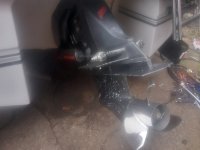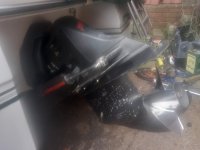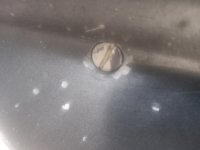getting back to that anti-siphon valve....from US Coast Guard Regs....
https://www.law.cornell.edu/cfr/text/33/183.568
other good things to know, relating to engine compartment ventilation for inboard gas engines, etc:

www.law.cornell.edu
Thanks Lou, I opened the links...
Copied and pasted...
§ 183.568 Anti-siphon protection.
Each fuel line from the fuel tank to the fuel inlet connection on the carburetor must:
(a) Be above the level of the tank top; or
(b) Have an anti-siphon device or an electrically operated fuel stop valve:
(1) At the tank withdrawal fitting; or
(2) Installed so the line from the fuel tank is above the top of the tank; or
(c) Provided that the fuel tank top is below the level of the carburetor inlet, be metallic fuel lines meeting the construction requirements of § 183.538 or “USCG Type A1” hose, with one or two manual shutoff valves installed as follows:
(1) Directly at the fuel tank connection arranged to be readily accessible for operation from outside of the compartment, and
(2) If the length of fuel line from the tank outlet to the engine inlet is greater than 12 feet, a manual shutoff valve shall be installed at the fuel inlet connection to the engine.
[CGD 74-209, 42 FR 5950, Jan. 31, 1977, as amended by CGD 81-092, 48 FR 55737, Dec. 15, 1983; CGD 85-098, 52 FR 19729, May 27, 1987]
===========
a - the fuel line comes out the top of the tank and the carb is definitely above the fuel tank? Not sure if the rubber fuel line is all above fuel tank level and I know that if it were to come off the fuel filter it could/would dangle so it would be below the level of the top of the fuel tank.
I don't see how the design of the valve could prevent siphoning in the even the rubber hose came off the filter and dangled below top of fuel tank level? It could be designed to limit the flow (if the hole the ball sits in gets narrower toward the output side, which is something I haven't checked) but I don't see how it would shut off if a certain flow limit were exceeded. It also occurs to me that if the boat does 1mpg flat out and does 45mph flat out this equates to flow of around 1 gallon every 80 seconds or 1 pint every 10 seconds, which is around what I'd expect if the tank were full and the rubber hose were siphoning fuel into the lowest part of the bilge - how would an ant-syphon valve know if that fuel were being pumped to the carb or just flowing into the bilge if the suction on the valve is around the same if the boat is driven flat out or if the rubber hose has come off and is siphoning fuel into the bilge?
Or maybe I'm wrong and it would siphon much faster than 1 gallon every 80 seconds if the pipe came off and the tank were full? But for the anti-syphon valve to not risk shutting off fuel to the carb if the boat is driven flat out the siphoning would have to be much quicker than 1 gallon every 80 seconds?

 www.law.cornell.edu
www.law.cornell.edu



























